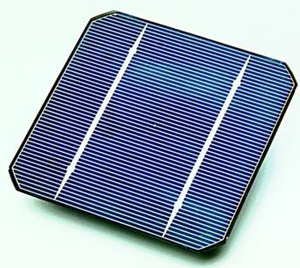
- Image via Wikipedia
The Earth receives more solar energy in one hour than the human race currently consumes in a year. At least, that’s what the scientists at Canada’s Université du Québec à Montréal (UQAM) tell us. That’s a lot of energy, and it’s going mostly untapped. Why? Because, we are told, solar collection cells are too inefficient and expensive to be more widely used. A researcher at UQAM, however, has come up with new technology that addresses these problems – for the first time in 20 years, according to Professor Benoît Marsan, there is an effective, low-cost solar cell.
The conventional solar cell
Marsan’s invention builds upon work done in the early ’90s by Professor Michael Graetzel of the Ecole Polytechnique Federale de Lausanne in Switzerland. Graetzel designed the dye-sensitized solar cell, which is still considered to be one of the most promising types of solar collection technology. Graetzel’s cell is composed of a porous layer of titanium dioxide nanoparticles, covered with a molecular dye that absorbs sunlight, like the chlorophyll in green leaves. The titanium dioxide is immersed under an electrolyte solution, above which is a platinum-based catalyst.
As in a conventional alkaline battery, an anode (the titanium dioxide) and a cathode (the platinum) are placed on either side of a liquid conductor (the electrolyte). Sunlight passes through the cathode and the conductor, and then withdraws electrons from the anode, at the bottom of the cell. These electrons travel through a wire from the anode to the cathode, creating an electrical current.
The drawbacks
Although Graetzel’s cell is easy to manufacture and can be used in a variety of applications, Marsan says it has two major problems that have held it back from large-scale commercialization. For one thing, the electrolyte is extremely corrosive, resulting in a lack of durability, and it’s densely colored, preventing the efficient passage of light. The other problem is the platinum cathode. Platinum is expensive, non-transparent, and rare – hardly a low-budget substance.








![Reblog this post [with Zemanta]](http://img.zemanta.com/reblog_b.png?x-id=1d54aaf8-9e45-4c51-b0d1-729fa45fb7ed)
